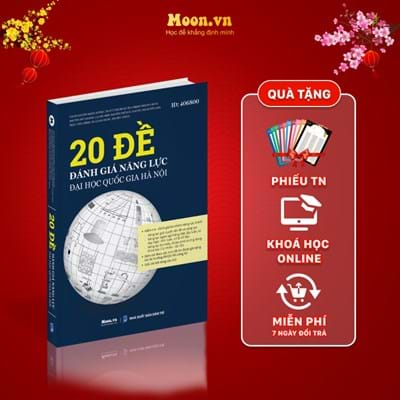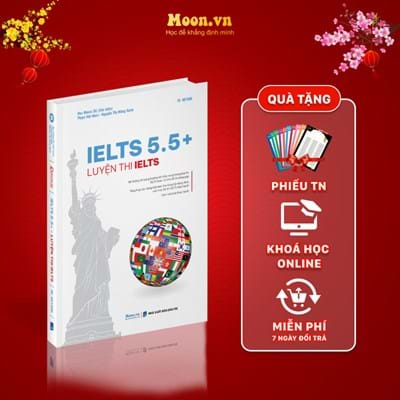One third of the face of the Moon we can see is composed of .
The Moon revolves once on its axis each time it orbits the Earth thus always presenting the face to Earthbound observers. However, even to the unaided eye, this unchanging face shows two contrasting types of landscape – dark, plain – like areas of low relief, and brighter decidedly more rugged regions which cover about two – thirds of the surface. Early astronomers mistakenly referred to the smooth dark areas as maria (or seas), giving the name terrae (or lands) to the bright upland regions. The terms have persisted since, even though the Moon’s surface has long been known to be completely waterless.
One third of the face of the Moon we can see is composed of _________.
A. very rough areas
B. light areas
C. low – lying areas
D. upland areas
• Bài dịch tham khảo:
Mặt trăng xoay một lần quanh trục của nó mỗi khi nó đi theo quỹ đạo Trái đất, do đó luôn hiện diện mặt đối mặt với các nhà quan sát trên Trái Đất. Tuy nhiên, ngay cả đối với mắt không có hỗ trợ, bề mặt không thay đổi này cho thấy hai loại cảnh tương phản - vùng tối, vùng đồng bằng giống như những vùng địa hình thấp, và những vùng ghồ ghề hơn sáng hơn rõ ràng bao phủ khoảng hai phần ba bề mặt. Các nhà thiên văn học sớm đã ám chỉ một cách nhầm lẫn những vùng tối màu mịn như maria (hay biển), đặt tên là terrae (hoặc vùng đất) cho những vùng đất cao sáng màu. Các thuật ngữ này vẫn tồn tại, mặc dù bề mặt Mặt Trăng từ lâu đã được biết là hoàn toàn không có nước.
Mặt trăng xoay một lần quanh trục của nó mỗi khi nó đi theo quỹ đạo Trái đất, do đó luôn hiện diện mặt đối mặt với các nhà quan sát trên Trái Đất. Tuy nhiên, ngay cả đối với mắt không có hỗ trợ, bề mặt không thay đổi này cho thấy hai loại cảnh tương phản - vùng tối, vùng đồng bằng giống như những vùng địa hình thấp, và những vùng ghồ ghề hơn sáng hơn rõ ràng bao phủ khoảng hai phần ba bề mặt. Các nhà thiên văn học sớm đã ám chỉ một cách nhầm lẫn những vùng tối màu mịn như maria (hay biển), đặt tên là terrae (hoặc vùng đất) cho những vùng đất cao sáng màu. Các thuật ngữ này vẫn tồn tại, mặc dù bề mặt Mặt Trăng từ lâu đã được biết là hoàn toàn không có nước.
Đáp án C
[“…plain – like areas of low relief, and brighter decidedly more rugged regions which cover about two – thirds of the surface.”]“brighter decidedly more rugged regions” chiếm 2/3 bề mặt, còn lại 1/3 bề mặt là “low-relief” tức là “low-lying areas”.







